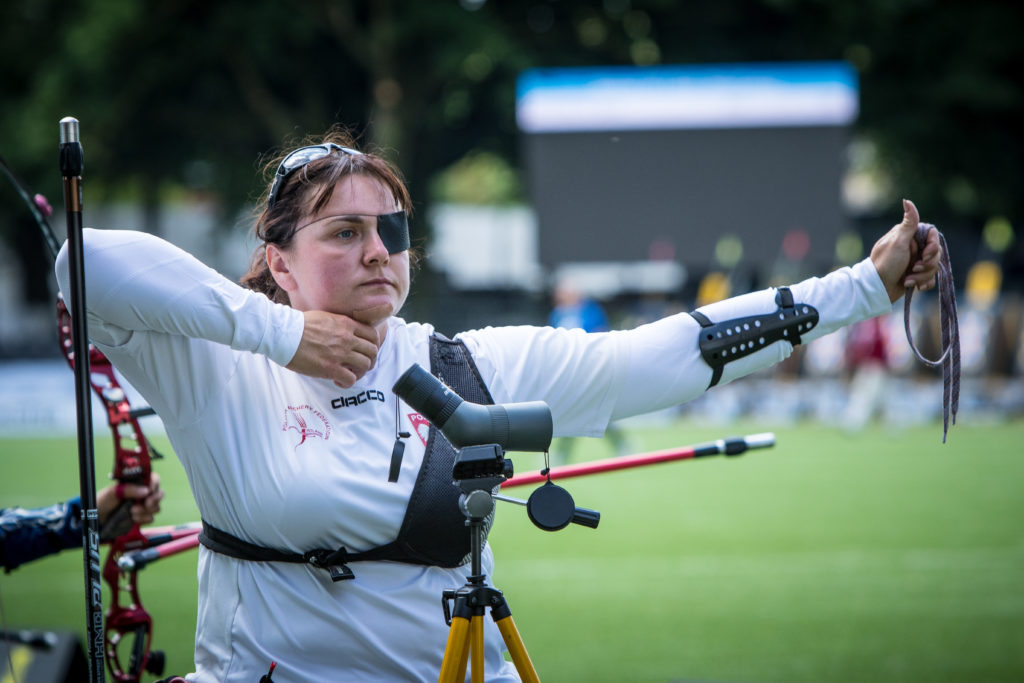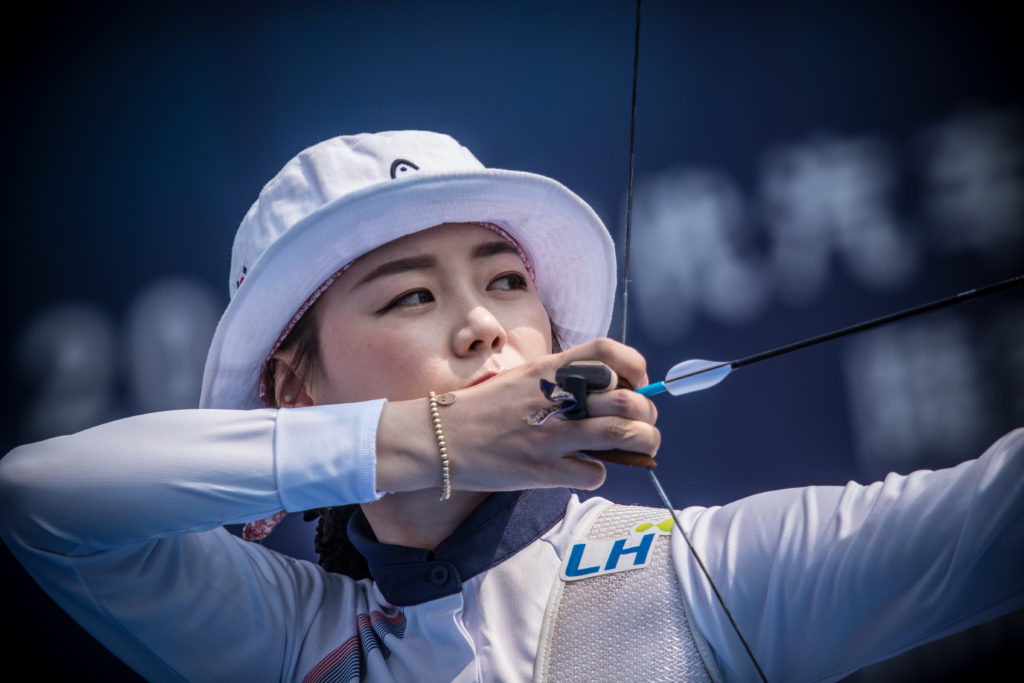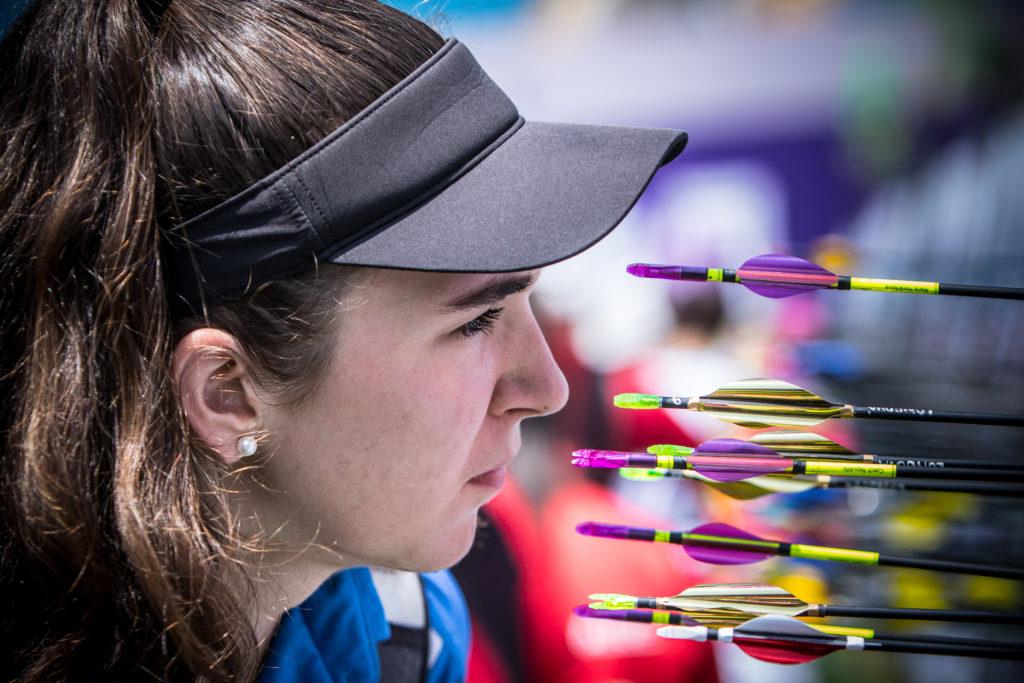Roy Rose discusses if you should shoot with one eye or both eyes open
Over the years, a number of discussion points have repeatedly arisen at clinics and seminars in conversations with elite shooters and a host of archers at all levels of proficiency. So, in this column, I will address some of the principal concerns, hopefully clarifying the road ahead for our aspiring newcomers.
A perennial favourite is: Should I shoot with both eyes open, or only the one?
The majority of champion recurvers and compounders shoot with both eyes open, for a couple of basic reasons. Firstly, we see better with both eyes open. Secondly, with one eye closed, the face becomes contorted and muscular tiredness can result, while there is also a slightly lower chance of attaining a repetitive anchoring. However, as you’ve probably observed, a good percentage of top performers shoot with one eye closed, so clearly it is not a major impediment.
The reason for this is often that, for many of us, trying to aim with both eyes open can produce a double target image, so it is far more relaxing to close one eye. Some shooters use a small plastic or cardboard attachment on their hat or visor, which blocks the sight of one eye, but allows the archers to shoot with both eyes open. I shot compound with this method and I did feel more relaxed with the vision from both eyes. So, the short answer is that whichever you find the most comfortable will be fine.

Next, let’s talk about aiming, because it’s a very important topic and one that I’m sure many archers don’t fully understand. Firstly, aiming is looking. The factors associated with that simple sentence are the reason why top archers regard aiming in a different light to the recreational archer or an archer new to the sport.
Understand this – it is not humanly viable to attain a perfect, tight, solid aim, because we all have a degree of body sway at full draw. Holding a pin or dot rock steady can’t happen.
Secondly, even though only milliseconds are involved, the time it takes for the image you see to transfer to the brain and then on to the body to react means that the right position could well have changed. In short, trying to capture a perfect aim is a non-productive mission.
What the elite understand is that the eye has its own self-centring capacity, which we constantly use very successfully. So, aiming becomes a case of looking at the X and allowing the eye to perform its tricks. If we overaim, try to force the dot on to the X, then the eye is already working to centralise the aim and an overcompensation occurs, so an up-down, left-right motion will result.
What elite archers are actually doing is not cognitive. It is primarily setting up the shot process, looking and trusting their execution phase to complete the shot super-efficiently. A so-called well-aimed shot backed by poor execution will never be as productive as a so-called loosely aimed shot backed by quality execution.
In my early career as a compounder, I actually shot a clear lens with no dot. By simply focusing on the X and focusing on my execution, my accuracy levels were enhanced, not diminished.
Here’s a question specifically for recurvers, but it also applies to compounders: Is there one specific aspect of form that is the most vital in securing maximum accuracy?
Obviously, there are many things that add up to create your accuracy level. Your bow must be set up and tuned correctly, you must have matched ammunition, fluency past the clicker, plenty of practice time and a cross section of other desirables, but the one you must have is bone-to-bone, 180-degree alignment from the front half of the shot to the back half at anchor.
Why is this so imperative? Unlike the compound archer, who has a one-point hold on a loop directly behind the nock of the arrow, the recurver has a three-finger hold and release. If that is not negotiated in a 180-degree line, it will spell immediate disaster. Why again?
This is because the string oscillates on release, no matter how fluent and proficient you are, and simple physics tells us that the least oscillation and most consistent release of the string will only be attained if it happens in one straight line. Pulling fluency through the clicker and release of the string are both maximised if you function in a straight line.
The compounder, with a one-point release off a loop, can get by with a lesser alignment, if his or her execution is supremely efficient, but it is significant that the true greats almost exclusively have a great line.
Another favourite, specifically for the aspiring compounder, is: I’ve tried all sorts of release aid models, but I’m still not scoring any better. What do I do next?
This query comes up each and every time, and there are a number of necessary facts that one must understand about release aids. Firstly, they all work when shot correctly. Someone, somewhere is shooting perfect scores with the model you are about to discard.
Changing from one release to another and then to another is both expensive, unnecessary and, worse still, destructive. It is completely at odds with the most basic concept in archery – that accuracy can only be obtained by duplication.
If it were humanly possible to make every shot a video replay of the previous one, you would have absolute accuracy. Our sport is all about simple duplication. If you are switching from one model to another, or from one execution method to another, then clearly no duplication or sameness of functioning can be happening.
You might do a little exploration and experimentation initially, of course, but then pretty quickly settle on a model – a thumb button or a hinge, most probably – and resist the urge to change and fiddle with execution processes.
I mentioned in a previous column that change is your enemy. The great ones shoot the same release, the same way year after year after year and that is why they are great. They have duplication down, as close as is humanly viable.
Finally, on a lighter note: question time in a clinic or seminar setting can be a fun experience. On a trip to the US in the 1970s, I was involved in a clinic with a number of other well-known archers and a young man posed a question to me as we were closing. He said: “If it’s down to the last arrow to win the tournament, is there any special thing you can do to calm your nerves and ensure a good result?”
The question seemed to be asked in a light-hearted way to see what I would say and it drew a few laughs as well. So, in view of that atmosphere, I replied: “Yes, I cross my fingers and say a quick prayer!” There were a few more laughs and then, clearly not getting the joke in any way, the young archer asked very seriously: “Which hand?”
I learned the lesson that every question can be a serious quest for an answer and an informed response, so I should never give less than a well-thought-out, definitive reply.



